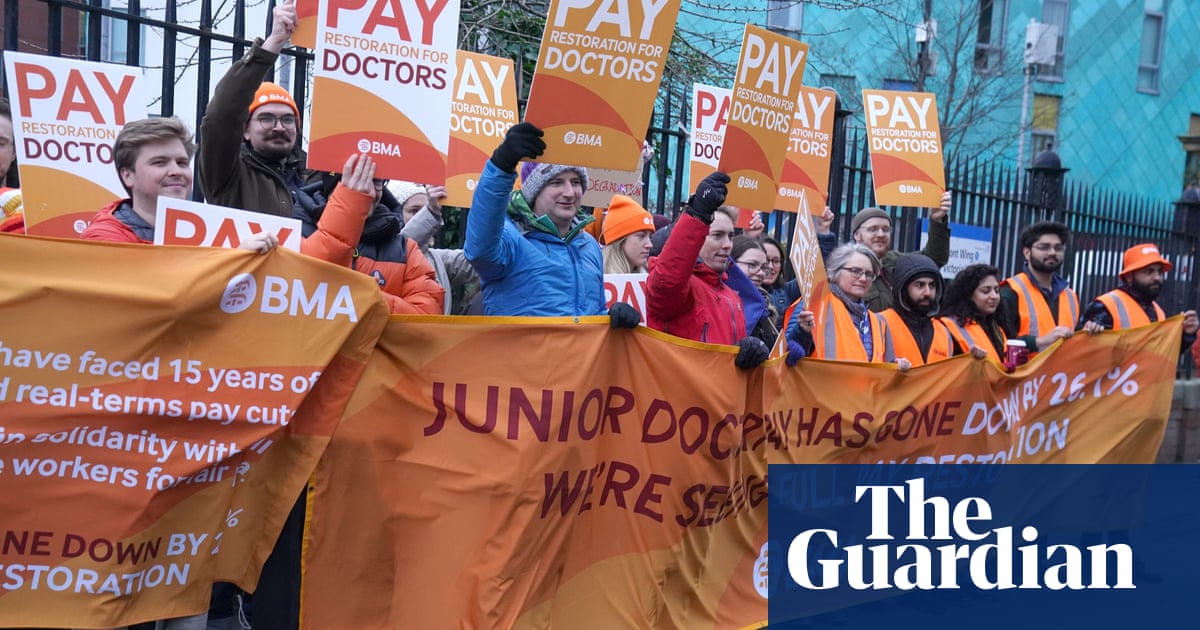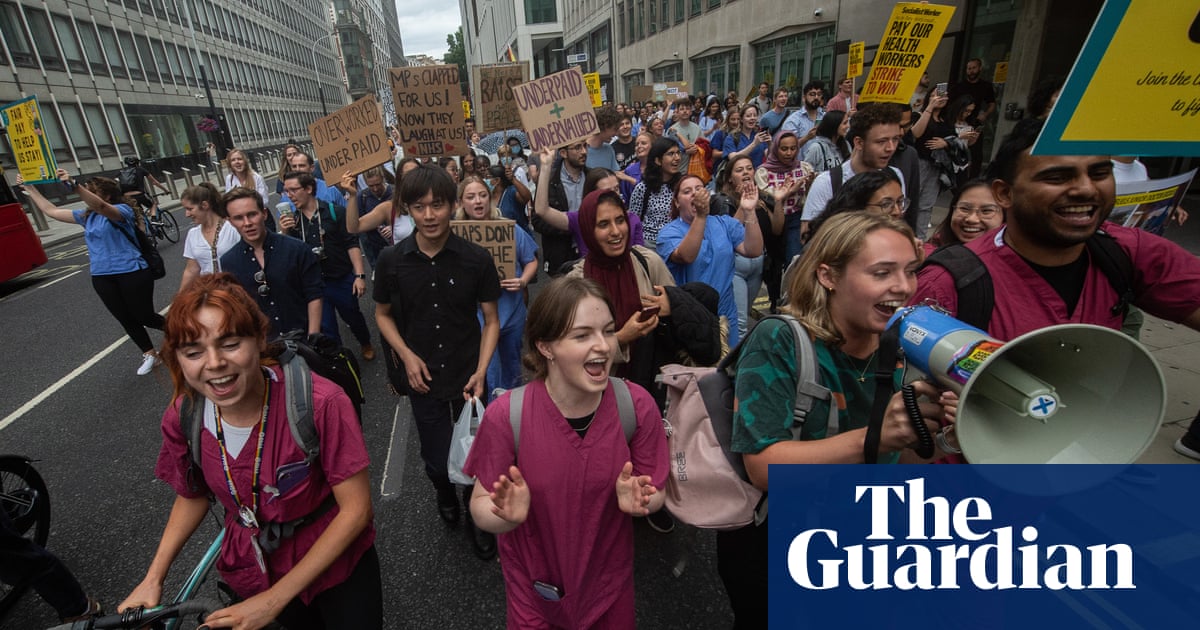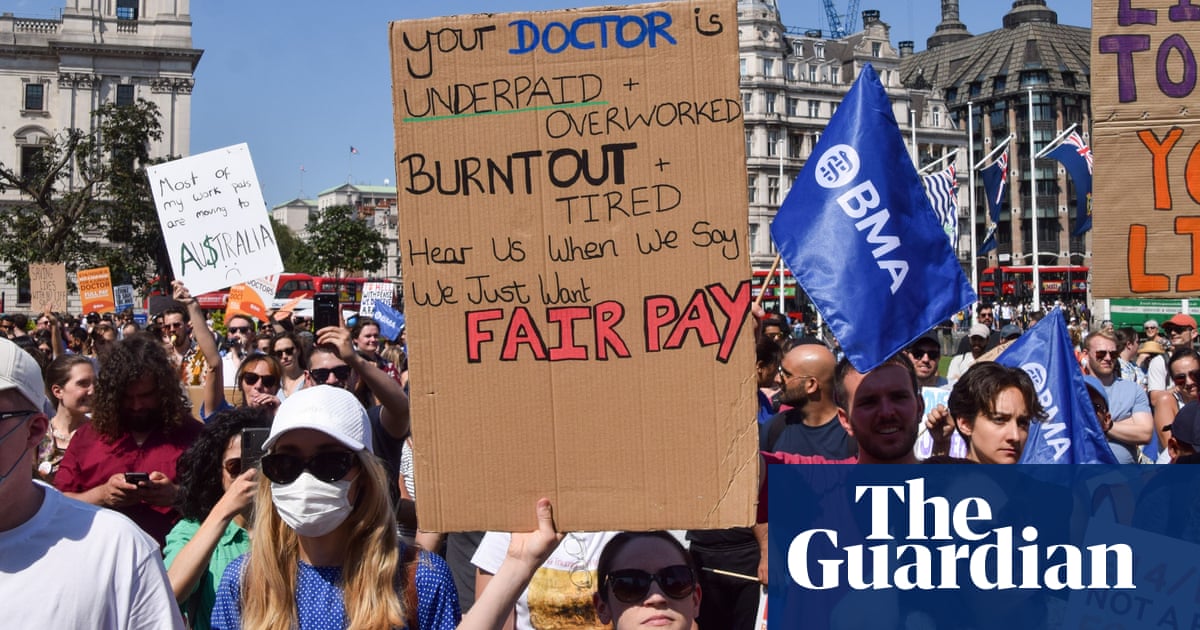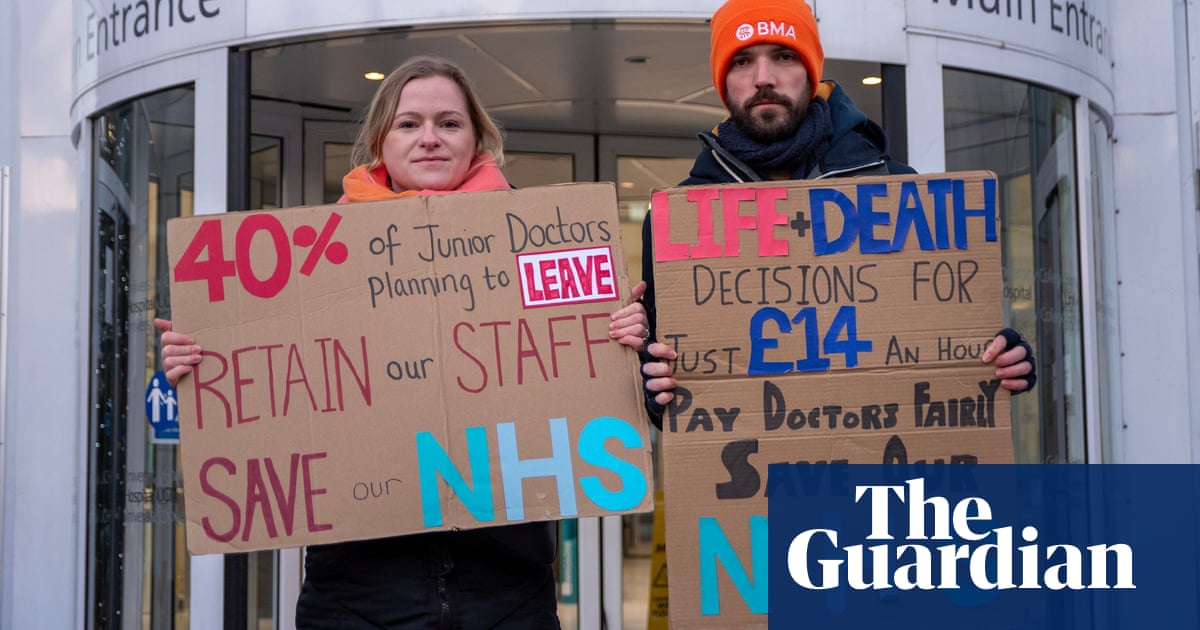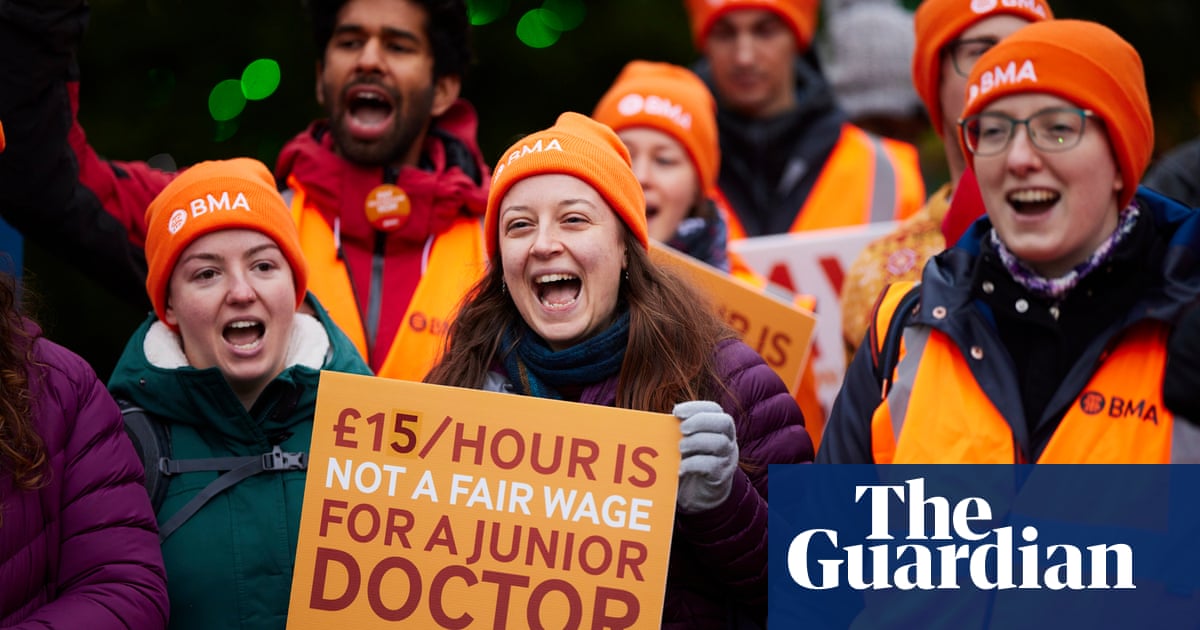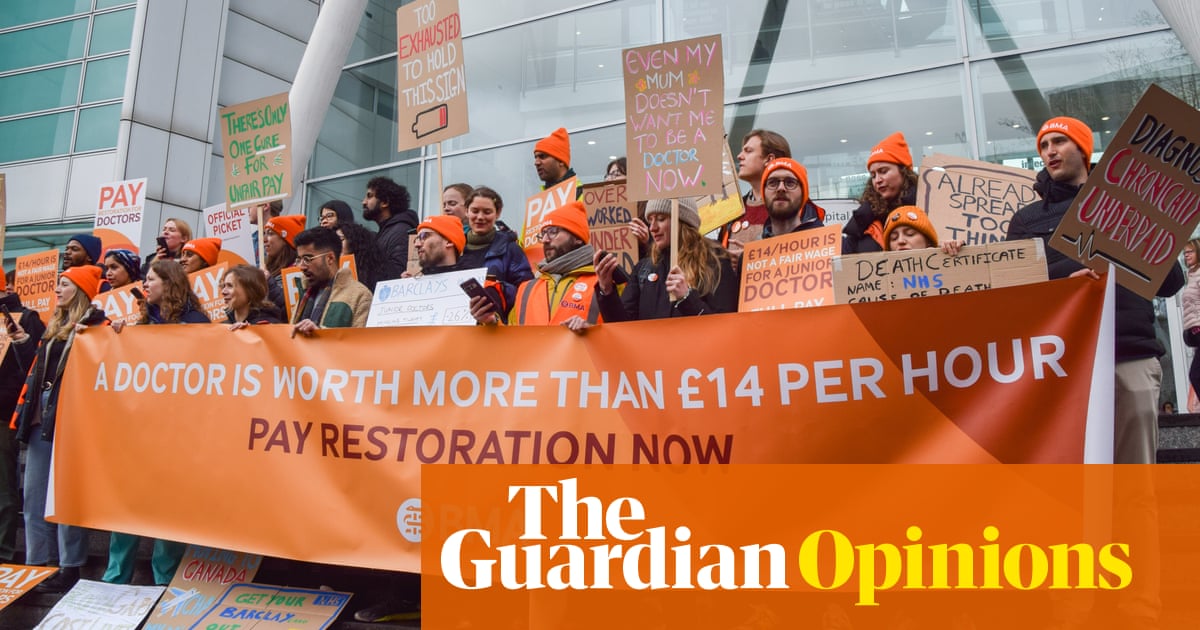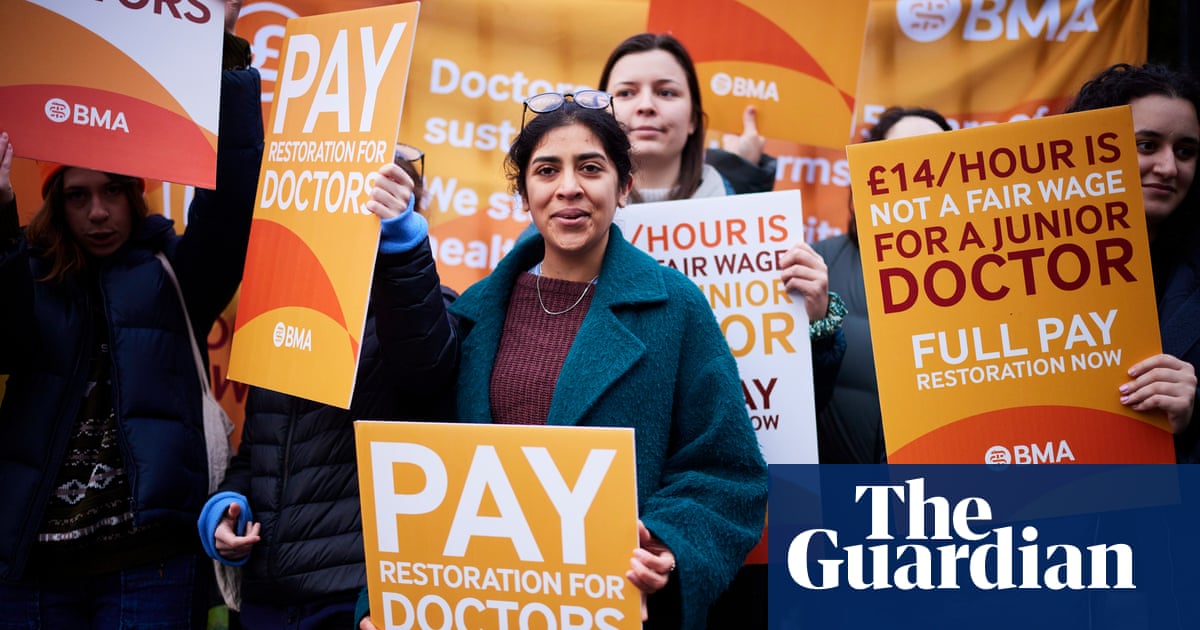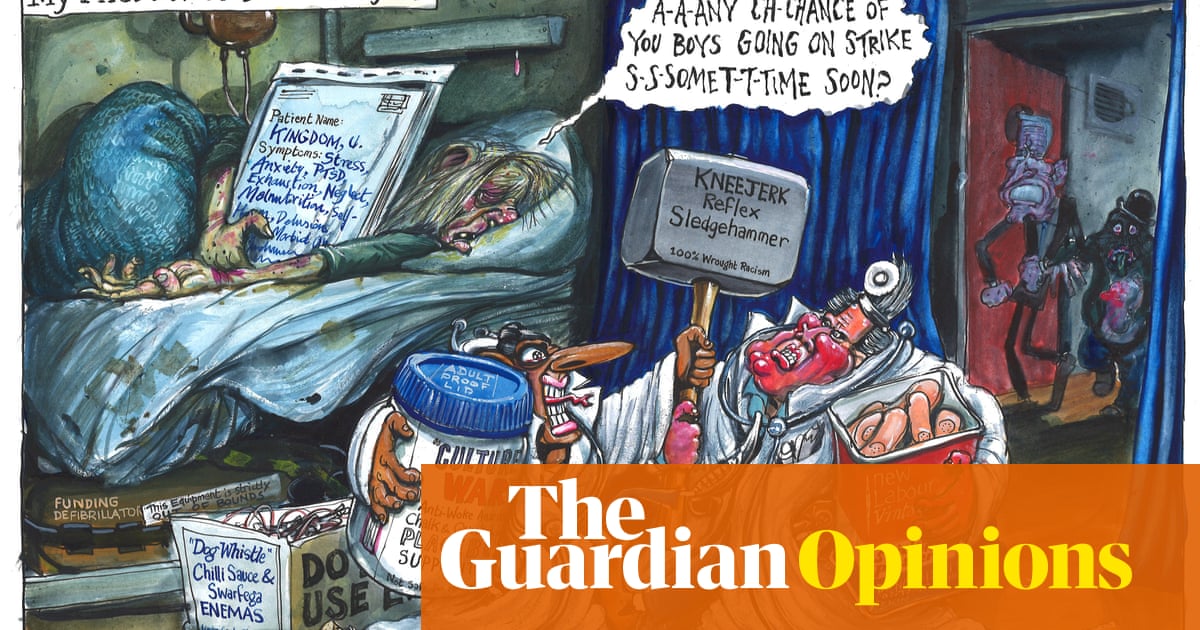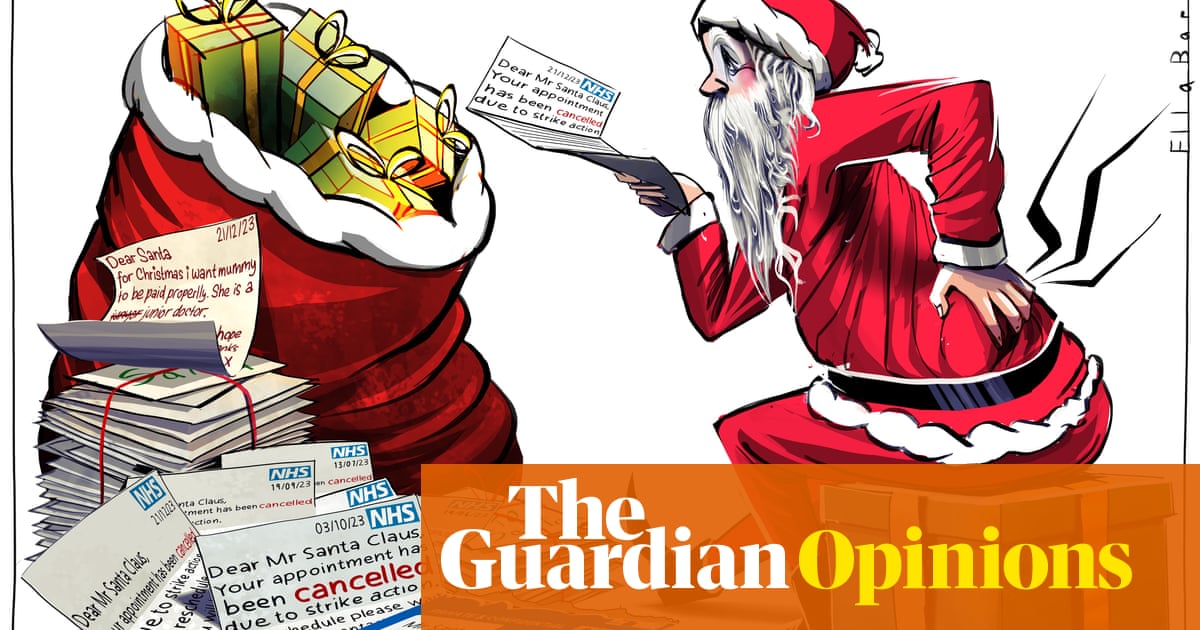
Almost a year after the first strike over pay and conditions, junior doctors in England are going out on strike again for six days. (A pay deal has already been reached in Scotland, while doctors in Wales are due to strike later this month and those in Northern Ireland are being balloted.)
While the new health secretary, Victoria Atkins, is on slightly better terms with the British Medical Association (BMA), which represents junior doctors, than her predecessor, Steve Barclay, the doctors and the government are still a long way apart. As the two sides make their case, here’s some help with interpreting what they have to say.
Claim: The strike could put patient safety at risk
Six days of strike action following bank holidays at a time of enormous pressure, there are real issues around patient safety”
NHS Confederation chief executive, Matthew Taylor, 23 December
The junior doctors have timed their strikes for maximum impact throughout the dispute – as you would expect any group of workers to do. But this one is at a new level, with 144 hours of uninterrupted stoppages during what is typically the most pressurised week of the year. The NHS Confederation, which represents hospital trusts, says that many trusts will be in a “highly vulnerable position”.
Emergency care will still be provided – but tens of thousands of procedures will be postponed, with cancer patients and people with sight problems among those affected. (A three-day strike last time let to 90,000 appointments and operations being delayed.) If a hospital finds itself facing an unpredictable emergency, this joint letter (pdf) from the BMA and NHS England explains that staff can be requested to return to work. The BMA says that it will only agree to such exemptions if all other avenues have been exhausted.
Health trust leaders fear such requests could take too long to consider, or spark differences in interpretation of what constitutes a major incident. The BMA rejects that but warns that the derogation process should not be used simply to ease more routine pressures.
There have been claims that a rise in excess deaths last year could have been caused by strikes, but there is no hard evidence of a link. While there is limited research available on last year’s action, a study of junior doctors’ strikes in March and April last year in the European Journal of Emergency Medicine found that mortality rates in emergency departments were similar to non-strike days. (One author is affiliated to the BMA.) A recent study looking at a 2016 junior doctors’ strike found no impact on mortality or readmission rates for emergency patients overall – although there were higher readmission rates for black emergency patients.
Meanwhile, although Rishi Sunak has previously blamed striking NHS workers for record waiting lists, research by the Health Foundation in October found they were responsible for just a 3% increase. The BMA has argued that this suggests doctors are being scapegoated by the government for a far deeper problem.
Claim: Junior doctors’ pay has been severely eroded over the last 15 years
Junior doctors’ pay has been cut by more than a quarter since 2008”
BMA website
So far, junior doctors have received an average 8.8% pay increase, with an additional 3% on the table this year. The BMA is asking for 35%, to restore pay to where they say it was 15 years ago – although they have also said “we recognise it would be reasonable to do it over a few years”, meaning that the gap between the two sides is a bit smaller than it sounds.
There is no doubt that junior doctors’ pay has fallen significantly in real terms; exactly how much depends on how you calculate it. The BMA arrives at its figure by using the retail prices index (RPI) to measure the impact of inflation on salaries. It says that this gives a 26.1% loss of earnings since 2008. But the Office for National Statistics said in 2018 that RPI is “a very poor measure of general inflation”.
The Institute for Fiscal Studies views a measure with the not-so-catchy title of consumer prices index including owner occupiers’ housing costs (CPIH) as more accurate. The IFS says that using CPIH gives a real terms pay cut of somewhere between 11% and 16% since 2010.
But not everyone agrees with that analysis of the best figure to use. The Royal Statistical Society said after a 2020 consultation with its members that “CPIH is a macroeconomic indicator that is good for gauging the general performance of the economy, while RPI is intended to reflect changes in the cost of living”. That aligns with the BMA’s position.
The figure also depends on which year you use as the baseline, of course: while the change is more severe against 2008, most similar measures are compared with 2010, when the coalition government came into power and after the financial crisis. But it’s worth noting that doctors have fared worse in the austerity era than many other occupations, as this chart makes clear.
Claim: The public support the junior doctors
The public know the only way to have a healthcare system that looks after them is to have enough doctors. And they can completely appreciate [that junior doctors’ pay] is just not enough”
Dr Vivek Trivedi, co-leader of the British Medical Association, 20 December
This is pretty simple to answer: support for the junior doctors remains strong, according to the most recent polling. In September, Ipsos found that 53% of the public back the doctors – less than ambulance workers and nurses, but more than consultants, and more than striking workers in any other sector. That has dropped just one percentage point against the same survey in April last year.
A YouGov poll in September found that voters blamed the government more than the BMA by a margin of 45% to 21%. A Christmas poll, also by Ipsos, put NHS staff at the top of the “nice list” – rating above teachers, the England Women’s Football Team and David Attenborough. Of course, all of this could change as the strikes wear on. But claims that, for example, “with every new walkout, [junior doctors’] reputation plummets further” are wide of the mark so far.
Claim: Junior doctors are refusing to hold talks; the government is refusing to make an offer
They have taken the decision to walk away from the discussions we were having, which were live”
The health secretary, Victoria Atkins, 13 December
I mean even recently the secretary of state has said they have a final offer to give. Well then give it and let’s solve the dispute”
Dr Rob Laurenson, co-leader of the British Medical Association, 30 December
Both sides are casting the failure of talks in terms that present themselves as willing to negotiate and the other side as intransigent – and both are right, up to a point. After five weeks of negotiations broke down at the beginning of December, the BMA said that the government’s 3% offer was not credible. But Victoria Atkins claimed that “we had not in any way made a final offer”.
Now Atkins is urging the BMA to “come back to the table”. But that apparently broad offer is contingent on cancelling the strike, which the doctors are not prepared to do.
Matthew Taylor of the NHS Confederation summarised the situation before Christmas: “It appears that the BMA won’t enter talks unless the government commits to some extra money; the government won’t go into talks until the BMA calls off the strikes.” He suggested that while both sides feared that relenting would reveal weakness, “from the perspective of the public, patients, or other people who work in the NHS, anyone who moved first, I think, will get a great deal of credit for that”.
In summary: the talks appear to have broken down because of the fundamental gap that remains between the two sides, rather than because either is more unreasonable than the other. Until some progress is made on that underlying point, the dispute is likely to continue.




